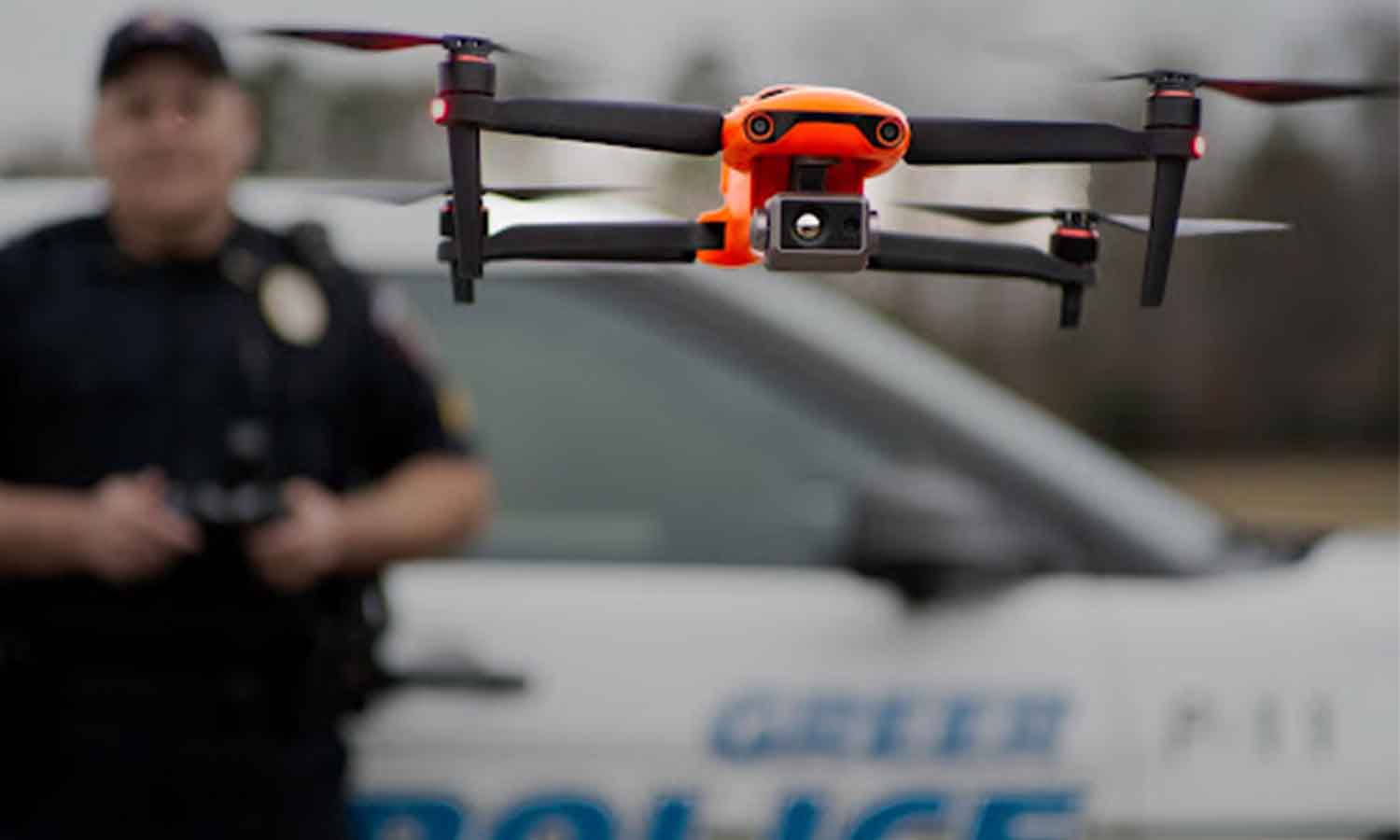“We Know It Will Fly” - The Papillion Police Department

Rapid, informed response is essential for dealing with emergencies. With drones becoming an increasingly common tool for police departments worldwide, integration with existing procedures is an ongoing consideration, especially when other air assets are in the area. That goes double when operating in restricted airspaces like airports and military bases.
Papillon, Nebraska, a city of about 20,000 just south of Omaha, is in the state’s fastest-growing county. It’s also near Offutt Air Force Base, so when developing a drone program, airspace management was a key consideration for Papillion’s police department.
Their fleet of Autel Drones has been essential in responding to emergencies in this complex airspace.
Beginnings
The department began planning a drone program in 2019, and it took flight in 2020.
The market for police drones is vast. With many models and companies to choose from, other departments’ experiences with Autel drones helped convince Papillion PD as well.
“It wasn't until I saw one firsthand and saw another agency that had one, [we] realized how quick and easy they deploy, and no fuss with geofencing,” Officer Travis Rozeboom said. “So we were immediately sold, and we still use those aircraft daily.”
The Papillion PD operates a variety of brands and models, but their go-to is the Autel EVO series with the 640T thermal camera.
The usefulness and cost-effectiveness were quickly proven, as it is with many drone programs. Originally, the department used donations to purchase its drones, but after they proved their worth, the program was added to the police budget.
Success Stories
Photogrammetry-capable EVOs help the department save time and manpower when investigating fatal car crashes.
“We haven't completely replaced the crash team response for fatality crashes, but we are able to document a scene in anywhere from 30 minutes to an hour typically,” Rozeboom explained, “Whereas the [traditional] crash team often will take four or five hours with six or seven people doing the same thing.”
In a high-profile case, a thermal-equipped Autel drone was used to catch a fleeting robbery suspect. A robbery in the nearby Omaha turned into a pursuit with shots fired. The pursuit crossed into Papillion’s jurisdiction, where three of the four suspects were apprehended.
A drone operator was able to spot the final suspect and locate the stolen weapon he’d dropped. It turned out the suspects had committed over a dozen other robberies before being caught.
In another situation, the ability to turn off their Autel drones’ running lights proved useful in de-escalating a nighttime standoff between police and an armed suspect. Rather than risk officers’ safety, a drone was used to observe the suspect, but the drone and its lights agitated the man. The pilots were able to quickly turn off the lights, so they could observe the suspect without causing him further stress, and eventually, the standoff was resolved without violence.
Officer Rozeboom also praised the ease of use of the department’s Autels, saying mission planning and execution is easy, which is crucial to fast response in developing or distracting situations.
“I could teach a monkey how to draw a map mission on the Autel,” he said. “It's literally dragging a box, setting your altitude, and pressing go.”
Open Skies
Of all the Autel drones’ standout features, one major feature sets it apart for Papillion: no geofencing.
“We bring the Autel for the sole and explicit reason of we know it will fly,” Rozeboom said. “It doesn't force us to do an update. It doesn't force us to be geofenced with some arbitrary geofence rule…Usually, within 30 to 60 seconds of being turned on, we're airborne and that's a huge asset to us.”
With the nearby Air Force base, airspace management is a significant consideration.
Papillon operates a fleet with drones from multiple brands, and their Autel drones’ rapid response is essential. Despite getting federal authorization to operate, some drones from other manufacturers still need several minutes to unlock and get airborne.
A key part of their program was getting the federal authorization to operate. Fortunately, the department had help; they knew a former Air Force officer who worked at the FAA, and he helped the department navigate the steps and regulations for their drone program.
It only took them a couple of weeks to get approved. Now, the Papillion PD knows where it’s authorized to operate, and is a few phone calls away from flying in restricted airspace. The department is very clear on where and where it isn’t allowed to fly, and they stress that communication and responsibility are key to a successful program.
The Future
The Papillion Police Department intends to purchase more drones, and they’re particularly interested in the EVO II V3 and EVO Max 4T series. They’re also interested in a Drone as First Responder (DFR) program, which may include using a Dragonfish.
Concerns about Chinese-made drones and US regulations have been a consideration for many first responder drone programs. Rozeboom said that, politics aside, their Autel drones are the best task for the job.
“We're big proponents of using the best tool for the job within your budget. And that's where Autel really exceeds our expectations,” Rozeboom said. “Price point, features that are included…and the ability to work every single time is huge in the law enforcement industry.”
Autel takes data security seriously. Drone camera feeds and Live Deck footage are broadcast on encrypted frequencies, and flight data is stored internally on each done. Our servers are based in the US.
We’re proud to serve first responders nationwide and we’re honored that agencies and departments have chosen us to protect the lives of officers and citizens.
Article by Autel Robotics all rights reserved.
